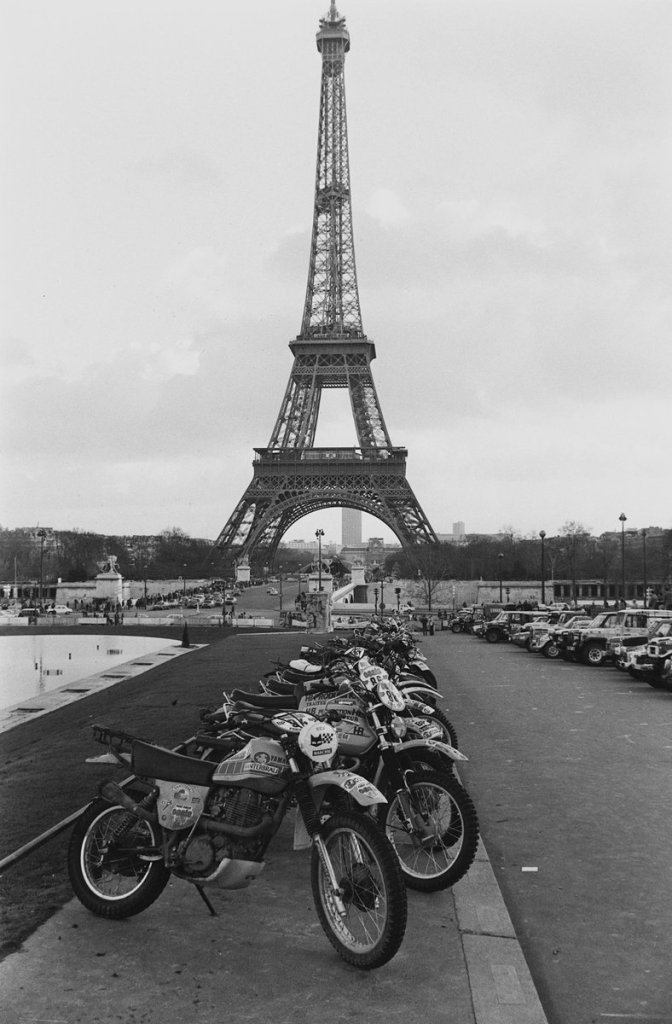
The Inaugural Paris-Dakar Rally: A Journey into History
The Inaugural Paris-Dakar Rally: A Journey into History
On December 26, 1978, an event that would come to define endurance racing began in Paris, France: the first Paris-Dakar Rally. Conceived by French motorcycle racer Thierry Sabine, the rally offered a grueling test of man and machine over 10,000 kilometers of unforgiving terrain, finishing in Dakar, Senegal. This inaugural race set the stage for what would become an iconic motorsport event.

Origins of the Rally
Thierry Sabine’s inspiration for the Paris-Dakar Rally came from personal experience. In 1977, Sabine got lost in the Libyan Desert during the Abidjan-Nice Rally. The vastness and beauty of the desert left such a profound impression on him that he envisioned a race that would share this experience with others. With the mantra, “A challenge for those who go. A dream for those who stay behind,” the Paris-Dakar Rally was born.

The Route
The first rally started at Place du Trocadéro in Paris and meandered through France before heading into the daunting landscapes of Algeria, Niger, Mali, Upper Volta (now Burkina Faso), and finally Senegal. Participants faced shifting sand dunes, rocky trails, and extreme temperatures, testing their endurance and navigation skills.

Motorcycle Participants
The motorcycle category in 1979 featured a lineup of adventurers from various backgrounds. Some of the key participants were:
- Cyril Neveu (France) – Riding a Yamaha XT500, Neveu became the first-ever winner of the Paris-Dakar Rally. Cyril went on to win the Paris Dakar Rally five times in 1979, 1980, 1982, 1986, and 1987.

- Philippe Vassard (France) – Competing on a Honda XL250S, Vassard displayed remarkable resilience throughout the race.

- Jean-Claude Morellet (France) – Known for his humor and resourcefulness, Morellet’s participation added character to the event. Competing on a BMW R800GS.

Overall, the inaugural rally featured over 90 motorcycles, many of which were privateers who embodied the adventurous spirit of the event.
The Winners
Cyril Neveu emerged as the victor in the motorcycle category, completing the race in a Yamaha XT500. Neveu’s triumph not only solidified his place in motorsport history but also elevated Yamaha’s reputation for producing rugged and reliable bikes capable of conquering the harshest environments.
Legacy
The first Paris-Dakar Rally established a legacy of adventure, camaraderie, and perseverance. It highlighted the importance of endurance, not just in physical strength but also in mental resilience. Today, the Dakar Rally remains a pinnacle of off-road racing, with its spirit deeply rooted in the adventurous ethos of the 1979 race.
Visual Highlights
The rally begins at Place du Trocadéro in Paris.
Competitors navigate the vast sands of the Sahara Desert.
Cyril Neveu celebrates his victory in Dakar.
The Paris-Dakar Rally’s inaugural edition remains a landmark moment in motorsport history, showcasing human determination and the unyielding allure of adventure. It is a reminder of how one man’s vision can ignite a passion that spans generations and a following around the globe.
Wikipedia 1979 Paris-Dakar Rally – See what Wiki has to say, charts and map, list of winners in each class
Dakar D’antanN – Dakar of yesteryear: Relive the legendary years of the Paris Dakar



